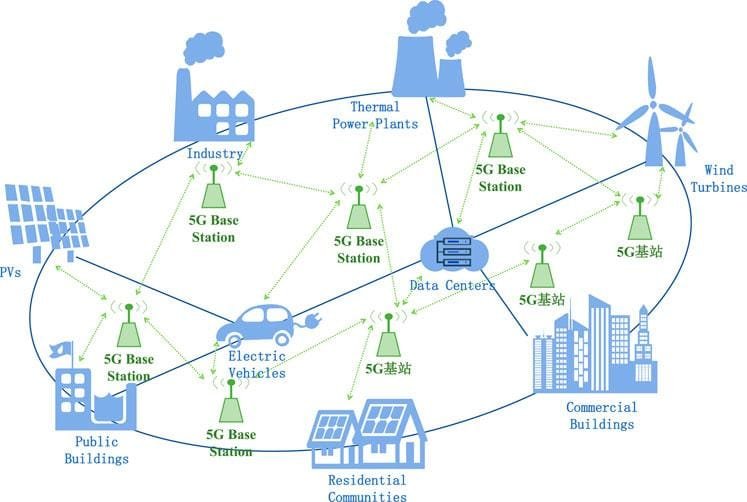Table of Contents
In the fast-paced world of technology, smartphones have become ubiquitous, seamlessly merging with our daily lives. Once seen as simple communication devices, they have evolved into powerful tools that shape how we interact, learn, and work. With each iteration, smartphones bring forth innovative features that enhance user experience and redefine our expectations.
As we delve into the current landscape of smartphones, it’s fascinating to observe how advancements in design, functionality, and connectivity have sparked a revolution. From the rise of foldable screens to the integration of artificial intelligence, the evolution of smartphones is a testament to human ingenuity and the relentless pursuit of progress.
The Rise of Artificial Intelligence in Mobile Technology
The integration of artificial intelligence into mobile technology is transforming the way users interact with their smartphones. Smartphone assistants like Siri and Google Assistant are becoming more intuitive, learning from user behaviors to provide personalized suggestions. This evolution enhances functionality, making everyday tasks seamless and efficient.
Moreover, AI algorithms are supporting various functions, from camera enhancements that optimize image quality to real-time translation in communication apps. These advancements have fostered a more engaging user experience, enabling devices to adapt and cater to individual preferences with remarkable precision.
| AI Feature | Description |
|---|---|
| Smart Camera | Enhances photo quality using machine learning |
| Voice Recognition | Improves interaction through contextual understanding |
| Predictive Text | Suggests words based on user typing habits |

Designing for Tomorrow: Innovations in User Experience
As we hurtle towards a tech-centric future, smartphones are evolving in breathtaking ways. The integration of AI-driven interfaces enhances personalization, allowing devices to learn from user behavior dynamically. This potential not only simplifies tasks but also anticipates needs, creating a seamless interaction experience that feels almost intuitive. With spatial computing on the rise, augmented reality is set to redefine how we interact with our surroundings and the digital world simultaneously.
Moreover, sustainability has become a key factor in smartphone design. Eco-friendly materials and energy-efficient components are no longer just trends but essential elements of modern devices. Features like modular designs allow for easy upgrades, promoting longevity. In addition, innovations such as 5G connectivity pave the way for smoother interactions and enhanced capabilities, ensuring that tomorrow’s smartphones are equipped to handle the demands of an increasingly interconnected world.

Sustainability in Smartphones: A Shift Towards Eco-Friendly Practices
In recent years, smartphone manufacturers have begun to recognize the urgent need for sustainable practices. By utilizing recycled materials and minimizing packaging waste, companies are taking significant steps towards reducing their environmental footprint. Innovations in biomaterials, like plant-based plastics and biodegradable components, are becoming increasingly integrated into device designs, enhancing their eco-friendliness without compromising on functionality.
Furthermore, many brands are committing to longer product lifecycles and offering easy repair options, reflecting a shift toward a circular economy. This approach not only helps in reducing electronic waste but also empowers consumers to significantly impact sustainability through their purchasing decisions. As awareness grows, the demand for eco-conscious devices is likely to shape the future of the smartphone industry.
| Eco-Friendly Practices | Description |
|---|---|
| Recycled Materials | Utilizing materials from previous devices to create new ones. |
| Biodegradable Components | Incorporating elements that break down naturally over time. |
| Repair Programs | Encouraging repairs instead of replacements to extend device life. |

Navigating the Future: Enhancing Connectivity and 5G Integration
As we step into a hyper-connected future, the role of 5G technology becomes paramount. This next generation of wireless communication dramatically enhances connectivity, enabling devices to interact at blistering speeds. With reduced latency and increased bandwidth, everyday smartphone functionalities evolve, allowing for seamless streaming, augmented reality experiences, and smart home integration. This transformative leap paves the way for applications previously deemed impractical.
The implications extend beyond individual users, fostering innovation across various sectors. Industries will benefit from capabilities like remote surgery, real-time data analytics, and efficient logistics. Over time, this convergence of connectivity and technology will redefine user experiences, making devices not just tools but integral parts of our daily lives. As 5G becomes ubiquitous, the possibilities are limitless, positioning smartphones as central hubs in an interconnected ecosystem.
To Wrap It Up
As we stand on the brink of innovation, the evolution of smartphones is far from over. The devices that once served merely as communication tools have become integral to our daily lives, showcasing remarkable transformations shaped by technological advances and consumer demands.
- Robust Features: Enhanced cameras, superior processing power, and AI capabilities redefine user interaction.
- Design Evolution: Sleek aesthetics coupled with intuitive interfaces create devices that are as beautiful as they are functional.
- Sustainability Efforts: Increased focus on eco-friendly materials signals a shift toward responsible technology.
The future promises even more exciting developments, where 5G, augmented reality, and biometric advancements will continue to propel us forward. As we unlock what lies ahead, it is essential to remain adaptable and receptive to the changes these devices will bring to our world. The journey of smartphones is a testament to human ingenuity and a glimpse into the endless possibilities that await us.



